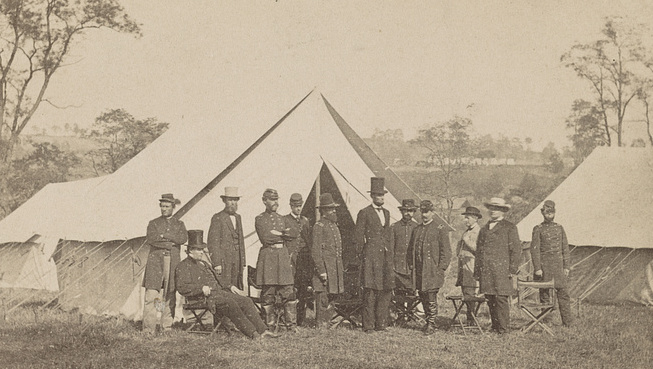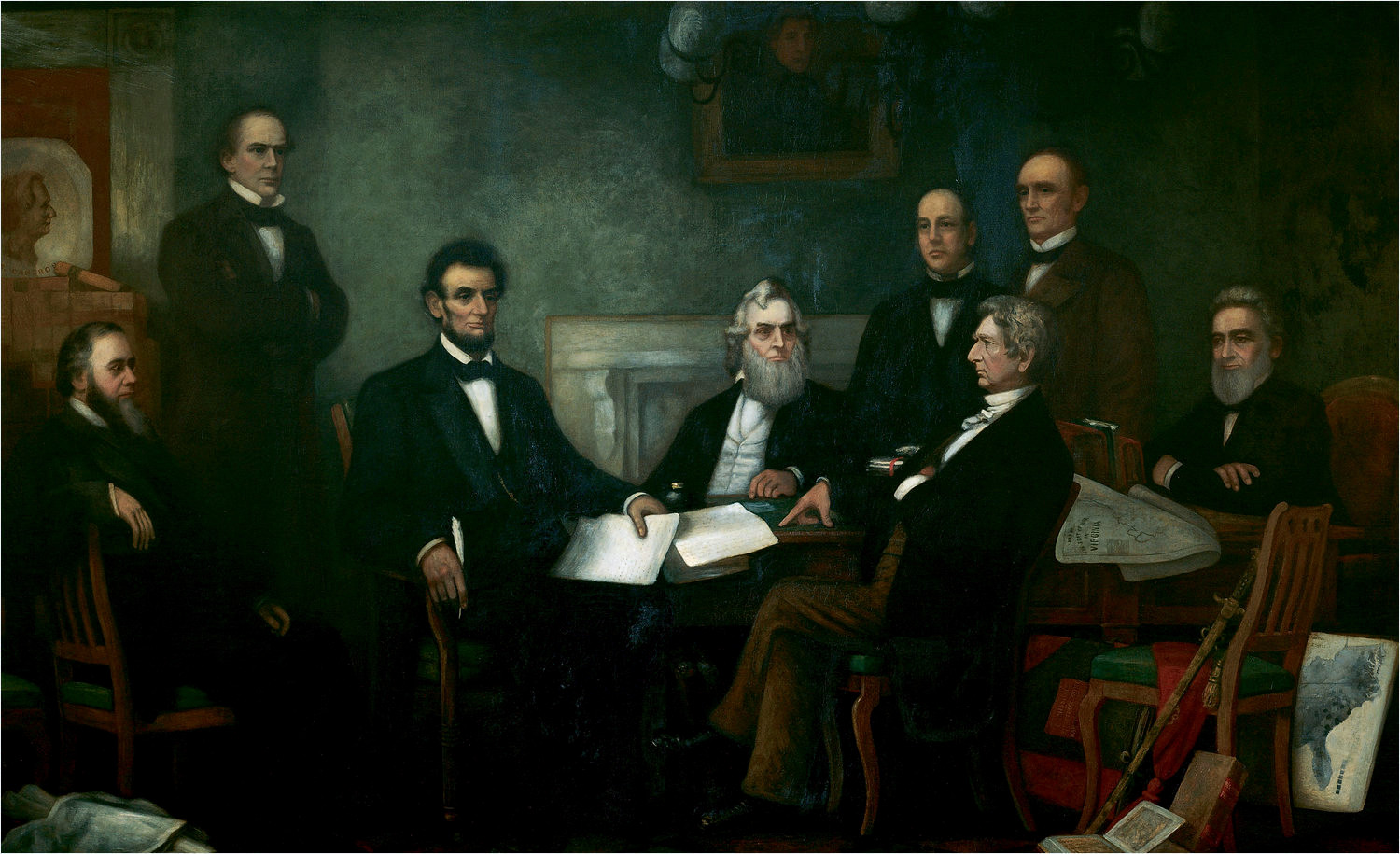end of header
History
You are here: Census.gov › History › Home Page Archive › 2017 › September 2017
2017
September 2017
Visit https://www.census.gov/history every month for the latest Census History Home Page!
U.S. Census Bureau History: The Battle of Antietam

A monument at the Antietam National Battlefield honors the men of the 137th
Pennsylvania Volunteer Infantry Regiment.
In September 1862, the men of the 137th Pennsylvania were in the vicinity of
Sharpsburg, MD. They saw little fighting, but were tasked with the difficult task
of recovering thousands of wounded and dead from the battlefield.
Photo courtesy of the U.S. National Parks Service.
On September 17, 1862, the Union and Confederate armies clashed in and around the town of Sharpsburg, MD. The Battle of Antietam (named after Antietam Creek by the North while the South called the engagement the "Battle of Sharpsburg") became the bloodiest day in American military history, with approximately 23,000 soldiers killed, wounded, or missing.
On the morning of September 17, Major General George B. McClellan's Union Army of the Potomac launched an attack on positions held by General Robert E. Lee's Confederate Army of Northern Virginia near Sharpsburg, MD. Bitter fighting ensued in the vicinity of the Dunker Church, Sunken Road, and the Antietam Creek bridges. Despite outnumbering Lee's forces 2-to-1, McClellan would not commit his entire army to the fight against the Confederates. As a result, the Confederates were able to successfully repulse Union attacks for most of the day.
Late in the battle, soldiers from Major General Ambrose Burnside's IX Corps captured one of the stone bridges crossing Antietam Creek, threatening the Confederate Army's right flank. However, before the Union Army could seize upon the momentum of Burnside's success, Confederate Major General A.P. Hill's Light Division arrived from Harper's Ferry, WV, to stop the Union advance. By late afternoon, the battle was over and the exhausted armies called an informal truce to gather their wounded. The Confederate Army withdrew across the Potomac River to Virginia. McClellan refused President Abraham Lincoln's request to pursue the weakened Confederates. Annoyed by McClellan's cautious approach to the war, Lincoln replaced the general with Ambrose Burnside on November 7, 1862.
You can learn more about the Battle of Antietam and the Civil War using data and records collected by the U.S. Census Bureau and other federal agencies. For example:
- During the Civil War, the nation's 36 states and territories were divided among the Union, Confederate States of America, and border states. According to the 1860 Census, the 20 Union states had a population of approximately 19.2 million. The five border states (Maryland, Delaware, Kentucky, Missouri, and West Virginia) had a population of about 3.5 million; and the 11 Confederate States of America had 8.7 million. Seven of the nation's ten largest cities were in northern states, including New York City, NY (813,669), Philadelphia, PA (565,529), and Boston, MA (177,840). Two border state cities had populations of more than 100,000—Baltimore, MD (212,418), and St. Louis, MO (160,773). New Orleans, LA, was the only southern city that qualified as one of the nation's ten largest, with a population of 168,675. New Orleans fell from the list of ten largest cities in 1890. A "southern" city did not return to the list until Houston, TX, qualified with a population of 938,219 in 1960. In 1970, Dallas, TX, with a population of 844,401, joined Houston. San Antonio, TX,with a population of 935,933 followed in 1990. In May 2017, the Census Bureau reported that states in the South Region were home to 10 of the nation's 15 fastest growing cities.
- The Battle of Antietam was fought in and around the town of Sharpsburg, MD, located in Washington County, MD. One year prior to the outbreak of the Civil War, Washington County's population was 31,417. It grew 10.5 percent by 1870 to 34,712. Washington County's population has grown every decade since 1790, and currently has an estimated population of 150,292.
- Soldiers from 2nd Division IX Corps, Army of the Potomac, led by General Samuel D. Sturgis nearly turned the tide of battle in the Union's favor after successfully capturing one of the stone bridges crossing Antietam Creek. The arrival of troops commanded by Confederate General A.P. Hill thwarted the Union momentum. The town of Sturgis, SD, home to one of the world's largest motorcycle rallies was named for General Sturgis, who was the first commander of nearby Fort Meade, SD, and his son James Garland Sturgis, who was killed at the 1876 Battle of the Little Big Horn.
- President Abraham Lincoln replaced Major General George B. McClellan with Major General Ambrose Burnside on November 7, 1862. Weeks later, Burnside led the Union Army on a campaign against the Confederate capital of Richmond, VA. The campaign ended in disaster as his men attempted to cross the Rappahannock River near Fredericksburg, VA, in December 1862 and January 1863. Lincoln replace Burnside with Major General Joseph Hooker on January 26, 1863.
- During the Civil War, the site of the Census Bureau's National Processing Center in Jeffersonville, IN, was a quartermaster depot. When the depot opened, widows, mothers, and sisters of Union soldiers manufactured shirts and trousers for the U.S. Army. The depot expanded later in the war to supply all types of military supplies.
- Anticipating the possibility of war, Superintendent of the Census Joseph C.G. Kennedy abbreviated the Census Bureau's publication plans. When hostilities broke out, Kennedy ordered his statisticians and cartographers to create detailed maps of the southern states. Maps like the "Distribution of Slaves in 1860" provided vital information about the South's population, agriculture, and transportation networks. On July 13, 1887, John Daily murdered Kennedy (pictured below with Abraham Lincoln following the Battle of Antietam) on a Washington, DC, sidewalk. A jury found Daily to be insane on January 12, 1888, and committed him to St. Elizabeth Hospital for the Insane. Daily died from an apparent suicide in his cell on December 13, 1889.
- After Abraham Lincoln replaced George B. McClellan as commander of the Union's Army of the Potomac, the Democratic Party nominated the general as their 1864 presidential candidate. Lincoln easily defeated McClellan, with 212 Electoral College votes to the general's 21. Lincoln received 2,218,388 votes while McClellan earned 1,812,807. McClellan later served a single term as New Jersey's governor (1878–1881) and aided Grover Cleveland's victory during the 1884 Presidential Election. On October 29, 1885, McClellan died in Orange, NJ. He was 58 years old.
- Census records are great source of information about Civil War soldiers. However, as many genealogists know, a fire destroyed most of the 1890 Census records in 1921. Although most of the population schedules are gone, most of the 1890 Veterans Census schedules are available at the National Archives and Records Administration. The U.S. Pension Office requested this special enumeration to help Union veterans locate comrades to testify in pension claims and to determine the number of survivors and widows for pension legislation.
- Are you interested in learning more about the Civil War using data collected by the Census Bureau and other federal agencies? Visit the Home Page Archive to learn more about Abraham Lincoln and the Confederate surrender at Appomattox Court House. You can also study the Famous and Infamous Census Records of some of the war's notable leaders.

On October 3, 1862, Superintendent of the Census Joseph C.G. Kennedy (third from right) accompanied President Abraham Lincoln to the
Antietam battlefield near Sharpsburg, MD. Lincoln hoped his visit would encourage General George McClellan, commander of the
Army of the Potomac, to attack the Confederate Army.
Photo courtesy of the Library of Congress.

View larger image
Francis Amasa Walker
Superintendent of the 1870 and 1880 Censuses, Francis Amasa Walker was a major with the 15th Massachusetts Volunteer Infantry Regiment during the Battle of Antietam.
Walker survived the battle, but 349 of the 606 men he took into the field were killed, wounded, or missing.
Read more about Walker's military career in Captured! The Civil War Experience of Superintendent of the Census Francis Amasa Walker.

View larger image
Did You Know
Presidents Fillmore, Pierce, and Tyler commissioned Francis Bicknell Carpenter, of Homer, NY, to paint their official portraits.
The White House commissioned Carpenter to paint a portrait of Abraham Lincoln in 1864. Titled "First Reading of the Emancipation Proclamation by President Lincoln," the painting depicts Lincoln with his advisors and includes the 1860 Slave Distribution Map (bottom right corner) that the Census Bureau published in September 1861.
This Month in Census History
President George H. W. Bush nominated Barbara Everitt Bryant to become the Census Bureau's first female director on September 1, 1989.
Bryant oversaw the nation's 21st census, which counted 248.7 million people.
On January 19, 1993, the Census Bureau's History Staff conducted an oral history with Bryant in which she discussed her career in the fields of opinion research, demographics, and marketing.
Comments or suggestions?




